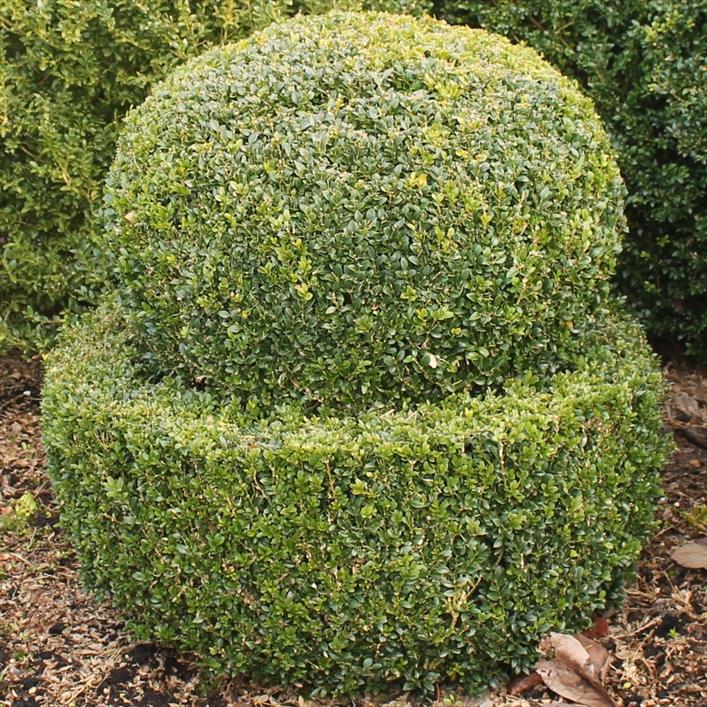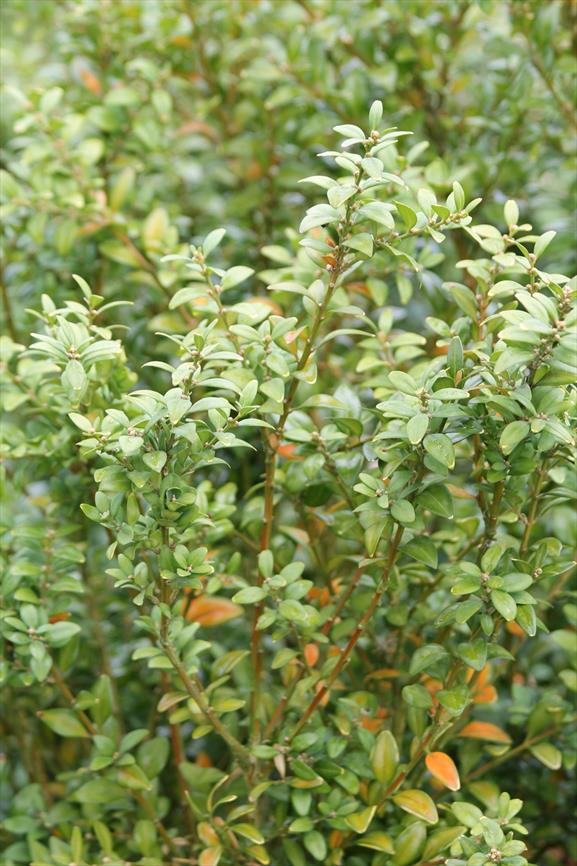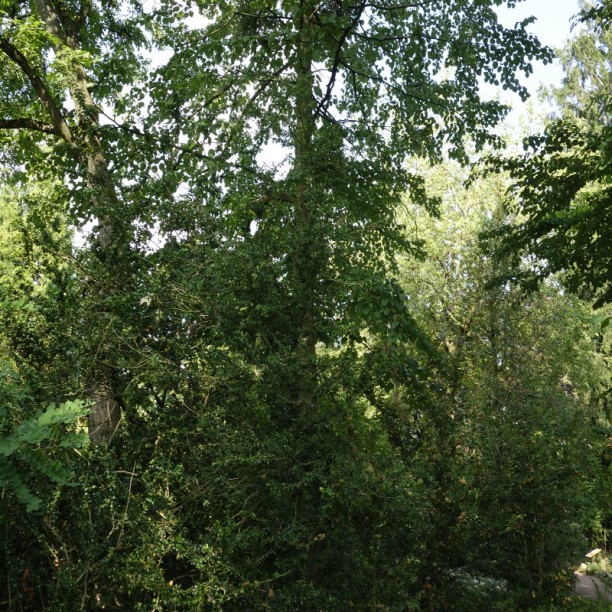Box
Buxus sempervirens
Boxwood family (Buxaceae)
Green guard and buffoon
In old, formal, Dutch gardens this plant acted as a guard: between neat hedges of box other plants were “locked up”. In the past box was specifically used for striking, green imagery. Together with holly and yew, box was subject to topiary and thus disguised as cubes, spheres, birds or sailing boats etc. By about 1700 the Dutch had become masters of the art but the fad collapsed only to become popular again in the late 19th century. These green figures were exported out of Aalsmeer to England and America but this trade ended with the outbreak of the First World War.
The Dutch vernacular name ‘palm tree’ was given to this taxon because the Dutch associated being evergreen with palms but box does not, of course, belong to the palm family. Many people think the green leaves smell like cat urine.
Themes
Crown jewel of Historic Garden in Aalsmee and the Kerkrade Botanic Garden.
Although box has been used medicinally in the past as a sedative and to treat syphilis, it is very rarely used in modern herbalism.
Box makes an excellent hedge from 45 cm to 4.5 metres tall. It is quite slow growing but very tolerant of pruning and is often used in topiary, where the hedge is trimmed into different forms for ornamental effect. The wood is hard, close grained and heavy and although the limbs are rather small, it is highly valued on account of its hardness - it is twice as hard as oak. It is used for engraving, printing blocks, bowls, combs etc. The root especially is favoured by wood turners and cabinet makers.
When boiled in lye (a strong alkali solution) the leaves and sawdust can been used to dye hair an auburn colour.
All parts of the plant are poisonous - especially the leaves and bark.
In the Catholic Church, Palm Sunday is traditionally celebrated with the blessing of palm branches at the beginning of the Holy Mass. In more northerly regions few palm branches are found and so the ritual is performed instead with twigs taken from the box.
Details
| Description: | Shrub, grows up to 4.5 m or more, compact habit with small, glossy oval or oblong leaves. |
|---|---|
| Distributions: | Southwest eurasia, north africa |
| Habitat: | Beechwood and scrub, usually on calcareous substrates |
| Year cycle: | Perennial (polycarpic evergreen) |
| Hardiness: | -4 - 5 f (hardy - very cold winter) |
| Flowering period: | Maart - mei |
| Flower color: | Yellow, green, white |
| Notes on flowers: | The small, yellowish flowers in the leaf axils are monoecious (individual flowers are either male or female, but both sexes can be found on the same plant). |
| Fruiting period: | September |
| Fruit color: | Brown, green |
| Notes on fruits: | Groen naar bruine verkleurende doosvrucht 0,5 - 0,8 cm met drie kleppen, twee hoorntjes per klep. |
| At its best: | April, december |



